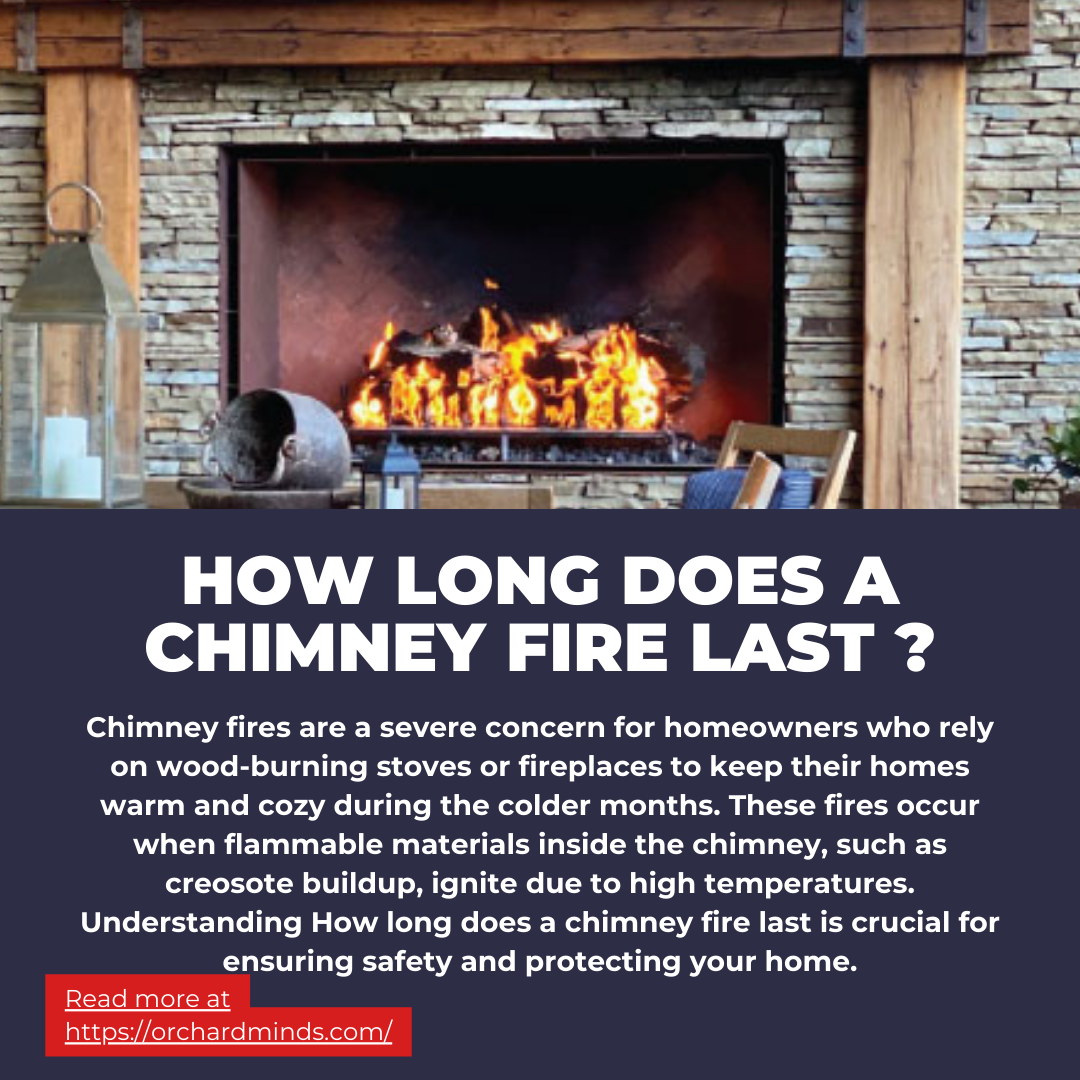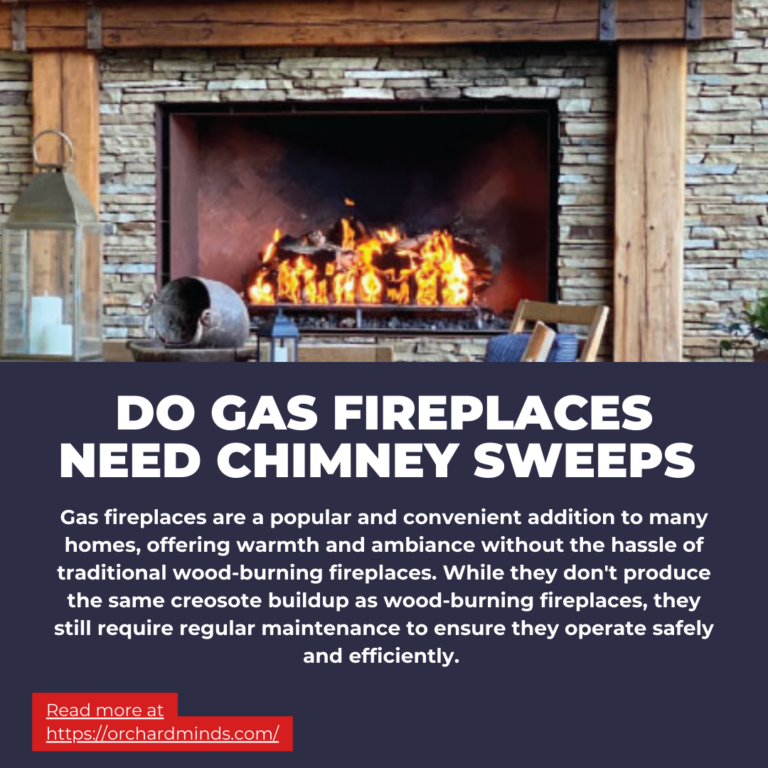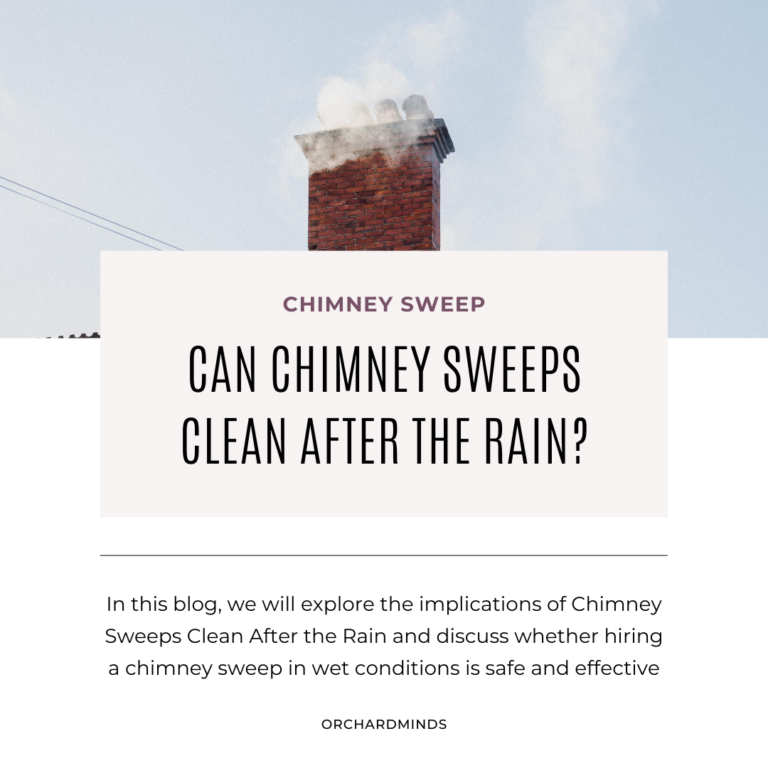Chimney fires are a severe concern for homeowners who rely on wood-burning stoves or fireplaces to keep their homes warm and cozy during the colder months. These fires occur when flammable materials inside the chimney, such as creosote buildup, ignite due to high temperatures. Understanding How long does a chimney fire last is crucial for ensuring safety and protecting your home.
Chimney Fire Basics
Before discussing the duration of chimney fires, it’s essential to understand how they occur. Chimney fires typically start when creosote, a highly flammable substance that accumulates in the chimney lining over time, ignites. Creosote is a byproduct of burning wood, and if not regularly cleaned, it can become a severe fire hazard.
Causes of Chimney Fires:
- Creosote Buildup: Chimney fires are most commonly caused by the buildup of creosote, a highly flammable byproduct of burning wood. Creosote accumulates on the chimney’s inner walls over time and can ignite when exposed to high temperatures.
- Excessive Heat: Burning wood at high temperatures or overloading the fireplace or stove with too much wood can create intense heat that can ignite creosote.
- Poor Ventilation: A poorly functioning chimney or one with inadequate airflow can result in incomplete combustion, leading to creosote buildup.
- Infrequent Cleaning: Chimneys that are not regularly inspected and cleaned are more prone to dangerous levels of creosote accumulation.
Signs of a Chimney Fire:
- Loud Crackling and Popping Sounds: A chimney fire often produces distinctive crackling and popping noises that can be heard throughout the home.
- Visible Flames or Sparks: In some cases, flames or sparks may be visible within the chimney or emanating from the top.
- Intense Smoke: The chimney may emit thick, dark smoke with a strong, acrid odor.
- Heat Transfer: You might feel excessive heat radiating from the chimney or even see adjacent walls or ceilings becoming excessively hot to the touch.
- Creosote Discharge: During a chimney fire, burning creosote can be expelled from the chimney and land on the roof or nearby areas.
Potential Dangers of Chimney Fires:
- Rapid Combustion: Once ignited, creosote burns at extremely high temperatures, causing an intense and potentially uncontrollable fire within the chimney.
- Structural Damage: The extreme heat generated by a chimney fire can damage the chimney structure, flue liner, and adjacent building materials.
- Safety Hazards: Sparks and embers released during a chimney fire can risk igniting nearby combustibles within the home.
- Health Risks: The smoke and gases produced by a chimney fire can be harmful if they enter your living space, potentially leading to smoke inhalation and health issues.
- Fire Spread: In severe cases, a chimney fire can extend beyond the chimney and ignite the home’s structure, leading to a more extensive house fire.
How long does a chimney fire last
The duration of a chimney fire can vary widely, depending on various factors. Chimney fires can last anywhere from a few minutes to several hours. The duration is influenced by elements such as the ignition source, the creosote buildup in the chimney, the ventilation system, and whether prompt intervention occurs. Some chimney fires may ignite quickly and burn intensely briefly, while others might smolder for longer before erupting into a more significant and potentially dangerous fire. Homeowners must understand the factors contributing to chimney fires and take preventive measures to reduce their risk.
The Range of Chimney Fire Durations
Chimney fires can vary widely in terms of their duration. Sometimes, a chimney fire may last only a few minutes, while in more severe instances, it can burn for several hours. The specific duration depends on a combination of the factors mentioned above and the circumstances surrounding the fire. Homeowners must be prepared for varying scenarios and understand that chimney fires can evolve rapidly if not addressed promptly.
Preventing Chimney Fires
Prevention is always better than dealing with the aftermath of a chimney fire. Here are some essential preventive measures:
- Regular Maintenance: Schedule annual chimney inspections and cleanings by a certified chimney sweep. They will ensure that creosote buildup is kept to a minimum and identify potential issues.
- Use Seasoned Wood: Burn only well-seasoned firewood, as it produces less creosote than green or wet wood.
- Install a Chimney Cap: A chimney cap can prevent debris and animals from entering the chimney, reducing the likelihood of blockages that could lead to fires.
- Monitor Your Fire: When using your fireplace or wood-burning stove, watch the fire. Ensure that it burns steadily and doesn’t become overly intense.
- Install Smoke and Carbon Monoxide Detectors: Make sure you have working smoke and carbon monoxide detectors in your home. These devices can warn early of a chimney fire or other potential hazards.
Safety Measures During a Chimney Fire
Prioritizing safety during a chimney fire is crucial, regardless of duration. Here are some safety measures to follow:
- Evacuate Safely: If you suspect a chimney fire, ensure everyone evacuates safely. Do not attempt to fight the fire yourself.
- Call 911: Contact the fire department immediately to report the chimney fire. They have the training and equipment to handle such emergencies.
- Avoid Smoke Inhalation: Avoid areas with heavy smoke, which can harm your health. Seek fresh air if necessary.
- Close Dampers and Vents: If it is safe, close the dampers and vents to reduce the oxygen supply to the fire.
- Wait for Professionals: Do not re-enter your home until the fire department declares it safe.
Understanding the duration of a chimney fire is essential for homeowners looking to maintain a safe and cozy environment. While chimney fires can vary in length, taking preventative measures and practicing good fire safety habits can significantly reduce the risk of a chimney fire occurring in the first place. Regular maintenance and vigilance are vital to keeping your home and loved ones safe during the heating season.




3 Comments